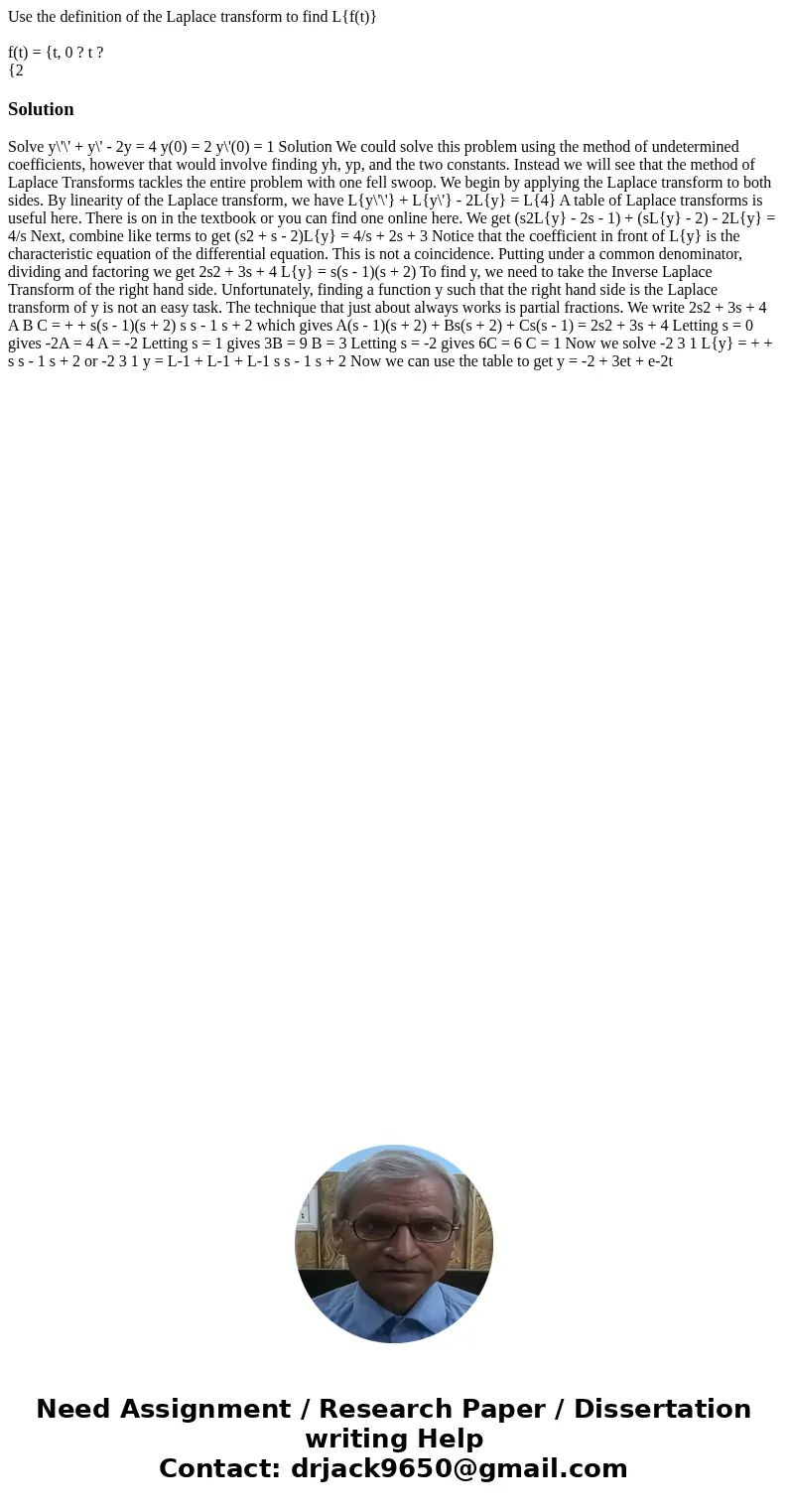Use the definition of the Laplace transform to find Lft ft
Use the definition of the Laplace transform to find L{f(t)}
f(t) = {t, 0 ? t ?
{2
f(t) = {t, 0 ? t ?
{2
Solution
Solve y\'\' + y\' - 2y = 4 y(0) = 2 y\'(0) = 1 Solution We could solve this problem using the method of undetermined coefficients, however that would involve finding yh, yp, and the two constants. Instead we will see that the method of Laplace Transforms tackles the entire problem with one fell swoop. We begin by applying the Laplace transform to both sides. By linearity of the Laplace transform, we have L{y\'\'} + L{y\'} - 2L{y} = L{4} A table of Laplace transforms is useful here. There is on in the textbook or you can find one online here. We get (s2L{y} - 2s - 1) + (sL{y} - 2) - 2L{y} = 4/s Next, combine like terms to get (s2 + s - 2)L{y} = 4/s + 2s + 3 Notice that the coefficient in front of L{y} is the characteristic equation of the differential equation. This is not a coincidence. Putting under a common denominator, dividing and factoring we get 2s2 + 3s + 4 L{y} = s(s - 1)(s + 2) To find y, we need to take the Inverse Laplace Transform of the right hand side. Unfortunately, finding a function y such that the right hand side is the Laplace transform of y is not an easy task. The technique that just about always works is partial fractions. We write 2s2 + 3s + 4 A B C = + + s(s - 1)(s + 2) s s - 1 s + 2 which gives A(s - 1)(s + 2) + Bs(s + 2) + Cs(s - 1) = 2s2 + 3s + 4 Letting s = 0 gives -2A = 4 A = -2 Letting s = 1 gives 3B = 9 B = 3 Letting s = -2 gives 6C = 6 C = 1 Now we solve -2 3 1 L{y} = + + s s - 1 s + 2 or -2 3 1 y = L-1 + L-1 + L-1 s s - 1 s + 2 Now we can use the table to get y = -2 + 3et + e-2t
 Homework Sourse
Homework Sourse